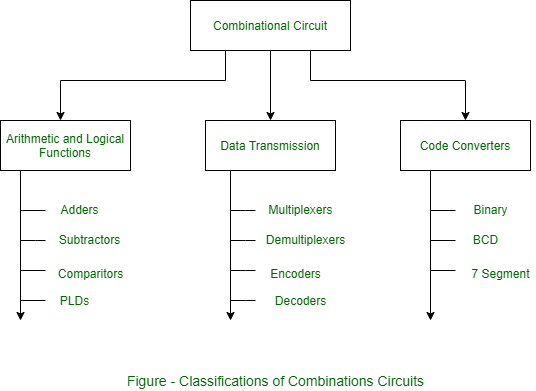Classifications of Combinational and Sequential circuits
Last Updated :
12 Apr, 2020
1. Classifications of Combinational Circuits:
There are three main categories of combinational circuits: arithmetic or logical functions, data transmission and code converter as given below in category diagram.

Functions of Combinational circuits are generally expressed by Boolean algebra, Truth table, or Logic diagram. The Boolean algebra is a logic function that is expressed in the form of expression. The Truth table contains outputs of all possible inputs. Whereas Logic diagram is a graphical representation of logic functions using logic gates. The diagram of a combinational circuit has logic gates with no feedback paths or memory elements. All the three representations are always equal for a specific logic circuit.
2. Sequential circuits:
Now, these are types and classifications of Sequential circuits.
Types of Sequential circuits:
The sequential circuits can be event driven, clock driven and pulse driven. There are two main types of sequential circuits: (a) Synchronous and (b) Asynchronous.
Like Article
Suggest improvement
Share your thoughts in the comments
Please Login to comment...